Your DIY ANZAC Day Kit
All of the questions you need to interview a relative about his/her war time experience. Collect the stories and preserve them for the future as a family heritage legacy
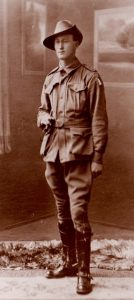
REMEMBER OUR FALLEN FAMILY HEROES
MISSED, BUT NOT FORGOTTEN
“Australia has sent young men and women to face the trials of war at Gallipoli, France, Mesopotamia, the Libyan Desert, Syria, the jungles of the South-West Pacific, in Korea, Malaya, Vietnam and many other theatres of war, where they have given life and limb for the preservation of the rights which are ours today.”
Sir Arthur J Lee,
National President,
Returned Services League,
1966 50thAnniversary of ANZAC Day.
As you gathered together the photos, stories and memorabilia associated with your family history, have you encountered the names of family members who paid the ultimate price in the service of their country?
How have these relatives been remembered within your family? How can you create a lasting memorial for these fallen heroes?
2018 marks the 100thAnniversary of the end of WWI, where many Australian service men and women saw service in Europe and the Middle East, making it an ideal year to research, collect and preserve the stories of your family members who served their country during times of war and conflict, in preparation for commemorating Australia’s national day of remembrance.
As you gathered together the photos, stories and memorabilia associated with your family history, have you encountered the names of family members who paid the ultimate price in the service of their country?
How have these relatives been remembered within your family? How can you create a lasting memorial for these fallen heroes?
2018 marks the 100thAnniversary of the end of WWI, where many Australian service men and women saw service in Europe and the Middle East, making it an ideal year to research, collect and preserve the stories of your family members who served their country during times of war and conflict, in preparation for commemorating Australia’s national day of remembrance.
Time to get started:
1. Make a list of the names of the family members you know died in the service of their country
a. ask other family members about family members who returned from service and add them to the list.
b. copy as many of the following forms as required for your own family.
2. List A. Find out and fill in all of the biographical details about each family veteran.
3. List B.Begin gathering all war-time photos which relate to the veterans named on the biographical forms and sort them into groups for each veteran. Then start filling in the details as set out in List B.
4. List C.Sort through all of the printed matter (letters or post cards, diaries, telegrams and other similar items) and make a pile for each veteran. Work through the items and write down the details as set out in List C.
5. List D. Again, as you have done for the previous categories, sort each veteran’s objects and memorabilia into separate piles and, after reading the questions associated with each item, identify someone who could probably answer them.
Once you have completed all of the lists, the next question should be about the storage of the various items and papers. Does your family want to donate them to the RSL, the local war museum or state library, National Archives of Australia or do they want to preserve them as part of a family heirloom for future family generations?
Option A – Donation.The family should be consulted about this option and establish consensus about the recipient organisation. Some organisations have special conditions which must be observed before the memorabilia can be accepted.
Option B – Family Legacy. To retain the war-time memorabilia and artefacts for the family, care must be taken with both the containers and the storage of such articles. Each state in Australia has several businesses which supply ‘archival quality’ containers which are both acid and lignin free and will preserve fragile photos and papers. They can also provide advice on storing the envelopes, folders or boxes containing your family mementos.
Some useful websites:
- ANZAC site – http://anzacsite.gov.au
- Australian War Memorial – http://www.awm.gov.au
- National Archives of Australia – http://www.naa.gov.au
- Info about WWII – http://ww2roll.gov.au
- Returned Services League – http://www.rsl.org.au
Mark the landing of Australian troops at Gallipoli, France or other areas of WWI conflict by remembering and honouring your family’s veterans in a meaningful way by putting together a family legacy for future family members.
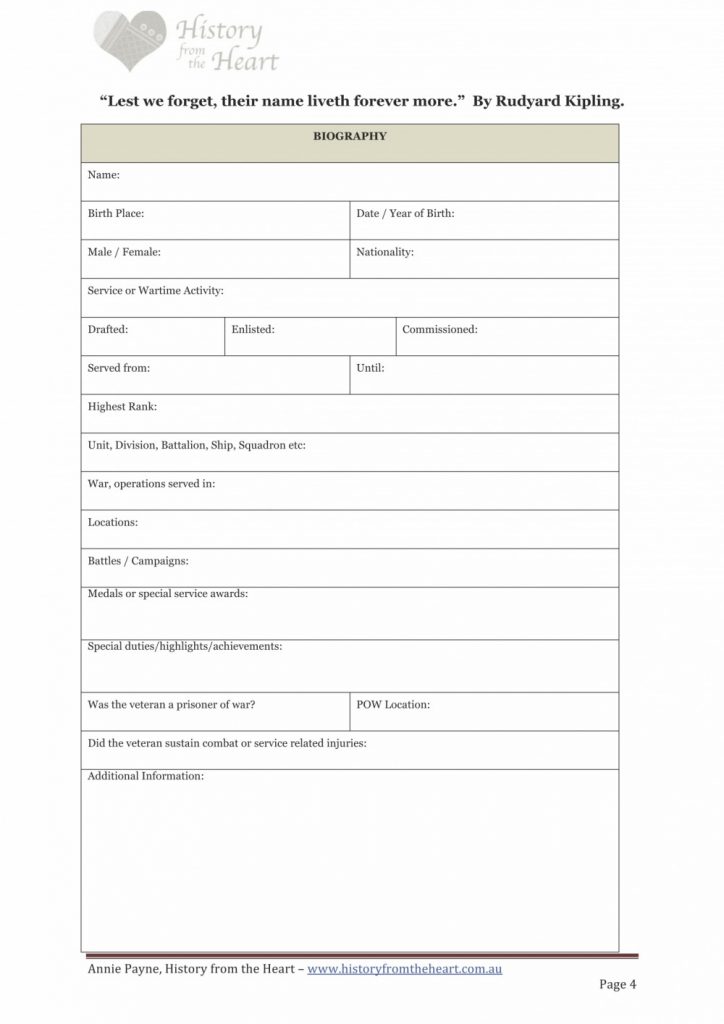
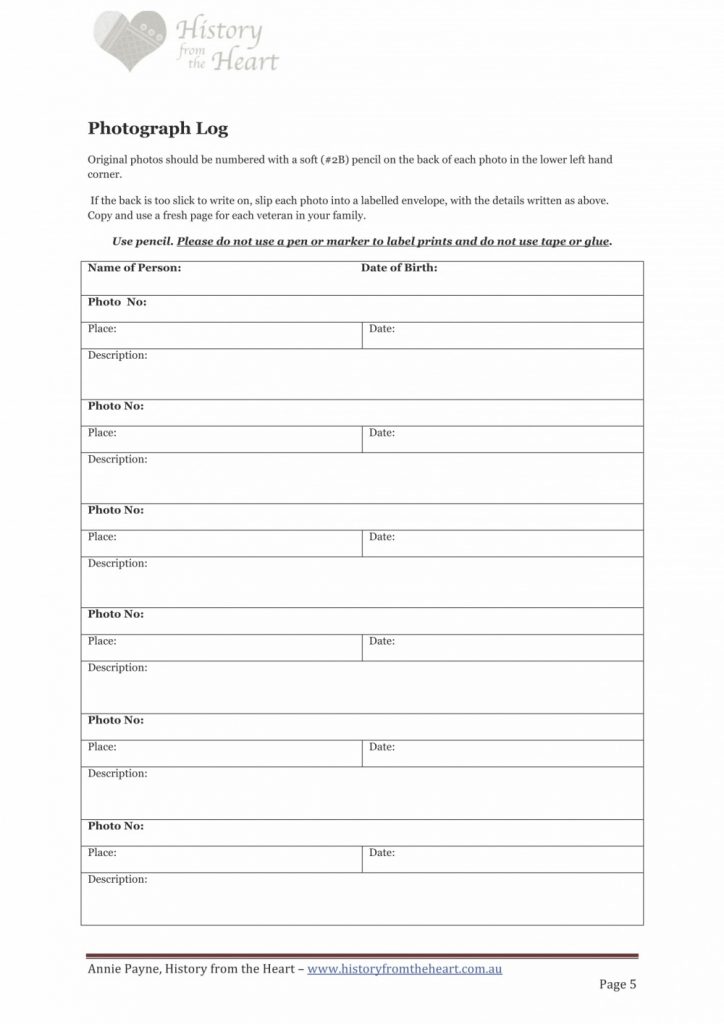
Annie Payne, History from the Heart – www.historyfromtheheart.com.au
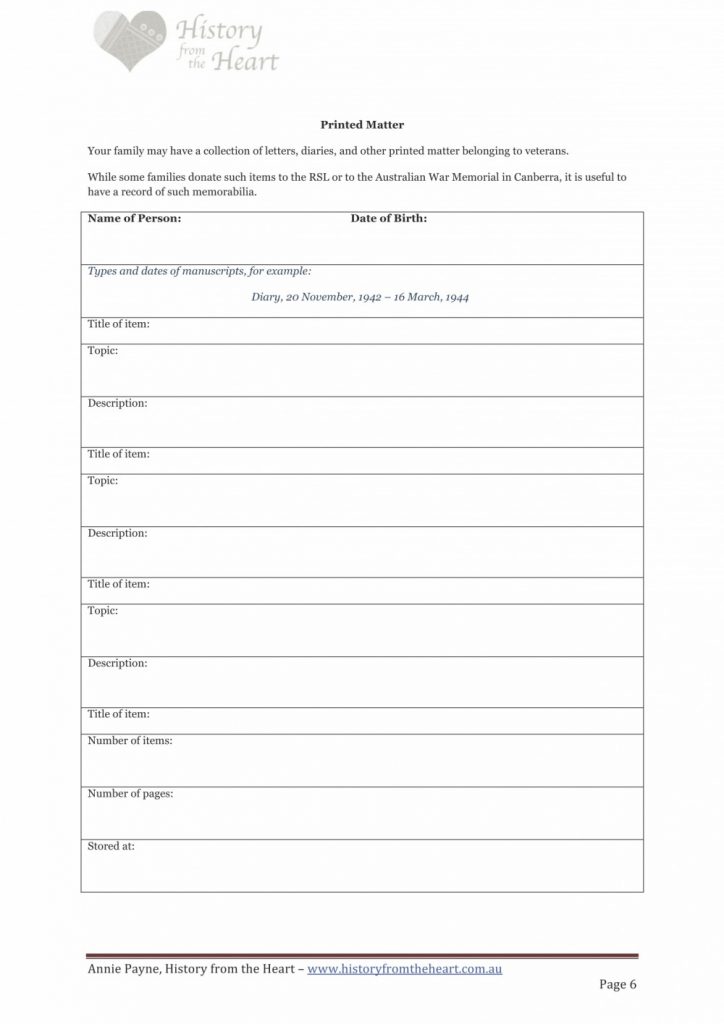

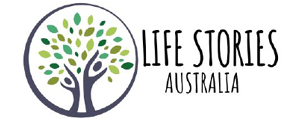
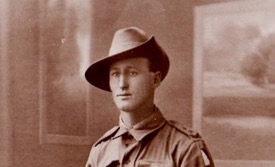

Follow Us